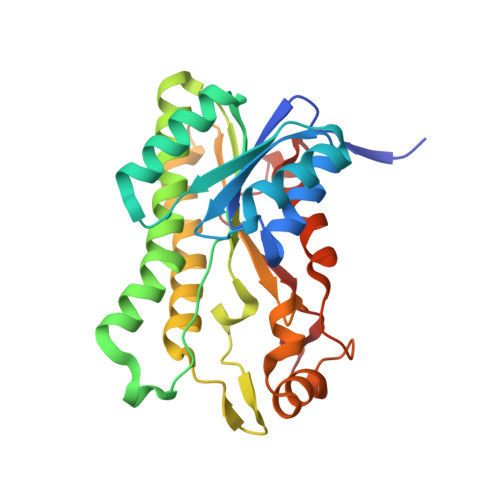The Crystallographic Structure of the Mannitol 2-Dehydrogenase Nadp+ Binary Complex from Agaricus Bisporus
Horer, S., Stoop, J., Mooibroek, H., Baumann, U., Sassoon, J.(2001) J Biological Chem 276: 27555
- PubMed: 11335726
- DOI: https://doi.org/10.1074/jbc.M102850200
- Primary Citation of Related Structures:
1H5Q - PubMed Abstract:
Mannitol, an acyclic six-carbon polyol, is one of the most abundant sugar alcohols occurring in nature. In the button mushroom, Agaricus bisporus, it is synthesized from fructose by the enzyme mannitol 2-dehydrogenase (MtDH; EC ) using NADPH as a cofactor. Mannitol serves as the main storage carbon (up to 50% of the fruit body dry weight) and plays a critical role in growth, fruit body development, osmoregulation, and salt tolerance. Furthermore, mannitol dehydrogenases are being evaluated for commercial mannitol production as alternatives to the less efficient chemical reduction of fructose. Given the importance of mannitol metabolism and mannitol dehydrogenases, MtDH was cloned into the pET28 expression system and overexpressed in Escherichia coli. Kinetic and physicochemical properties of the recombinant enzyme are indistinguishable from the natural enzyme. The crystal structure of its binary complex with NADP was solved at 1.5-A resolution and refined to an R value of 19.3%. It shows MtDH to be a tetramer and a member of the short chain dehydrogenase/reductase family of enzymes. The catalytic residues forming the so-called catalytic triad can be assigned to Ser(149), Tyr(169), and Lys(173).
- Department of Chemistry and Biochemistry, University of Berne, Freiestrasse 3, 3012 Berne, Switzerland.
Organizational Affiliation:


















